Acoustic Showdown: Martin vs Gibson vs Taylor
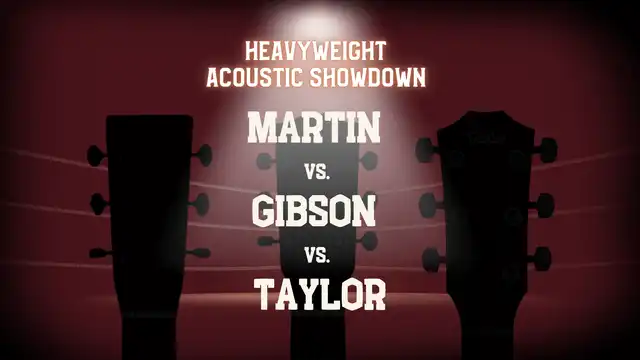

One could argue that there are three brands that have set the standard against which all other acoustic guitars are compared: Martin, Gibson, and Taylor. Because this is the internet, we’re here to ask: Which brand is best? Does the D-28 inspire dread(nought) in its opponents? Does the Hummingbird lay down the hammer? Or does the 814 send those old fogeys packing? Let’s dissect some iconic models and see if we can get an idea of who would win in a steel-string cage match featuring Martin, Gibson, and Taylor.
Martin
Founded in 1833, Martin has been making high-quality acoustic guitars for nearly 200 years. 200 years! While their output during that time has spanned hundreds of models designed by myriad makers, and assembled by thousands of builders, in relative guitar terms that record of success puts them up there with Stradivarius.
Martin guitars have been played by some of the most influential artists ever, including the likes of Bob Dylan, Neil Young, and Tony Rice. Martin’s ubiquity and long-running track record of quality means that the Martin sound has defined much of rock, folk, country, and bluegrass music.
Martin offers a wide variety of models that cater to different players’ needs, but they tend to be most popular amongst strummers and flat-pickers due to a clarity and punch that makes them perfect for lead lines - something often noted by those who take Martin's side in the showdown between Martin, Gibson, and Taylor.
Popular Martins
Since Martin has been around for nearly two centuries, we can only scratch the surface of their popular models. Short of a full lineup, here’s are three of the most beloved Martins:
D-28
What many would call the Martin, the D-28 is one of the most iconic guitars in all of music. Played by Hank Williams, the Beatles, and many more, the D-28 dreadnought rings out on countless iconic songs and performances.
Featuring Indian Rosewood back and side and a spruce top, D-28s are known for deep bass, bell-like highs, and cannon-like projection.
D-18
Sibling to the D-28, the D-18 was designed to be a bit less expensive by substituting rosewood for mahogany and ditching some ornamental trimmings such as herringbone binding. Beyond economy, the D-18’s alchemy of tonewoods gives it a voice all its own - and one that is equally as enamored as its pricier big brother.
In addition to its mahogany back and sides, the D-18’s spruce top has slightly different internal bracing than the D-28. The result is a guitar with a more straightforward, less complex sound and fewer overtones. This is one of the reasons that D-18s tend to be a go-to guitar for bluegrass players, as the less ornamented look and sound fits the genre better.
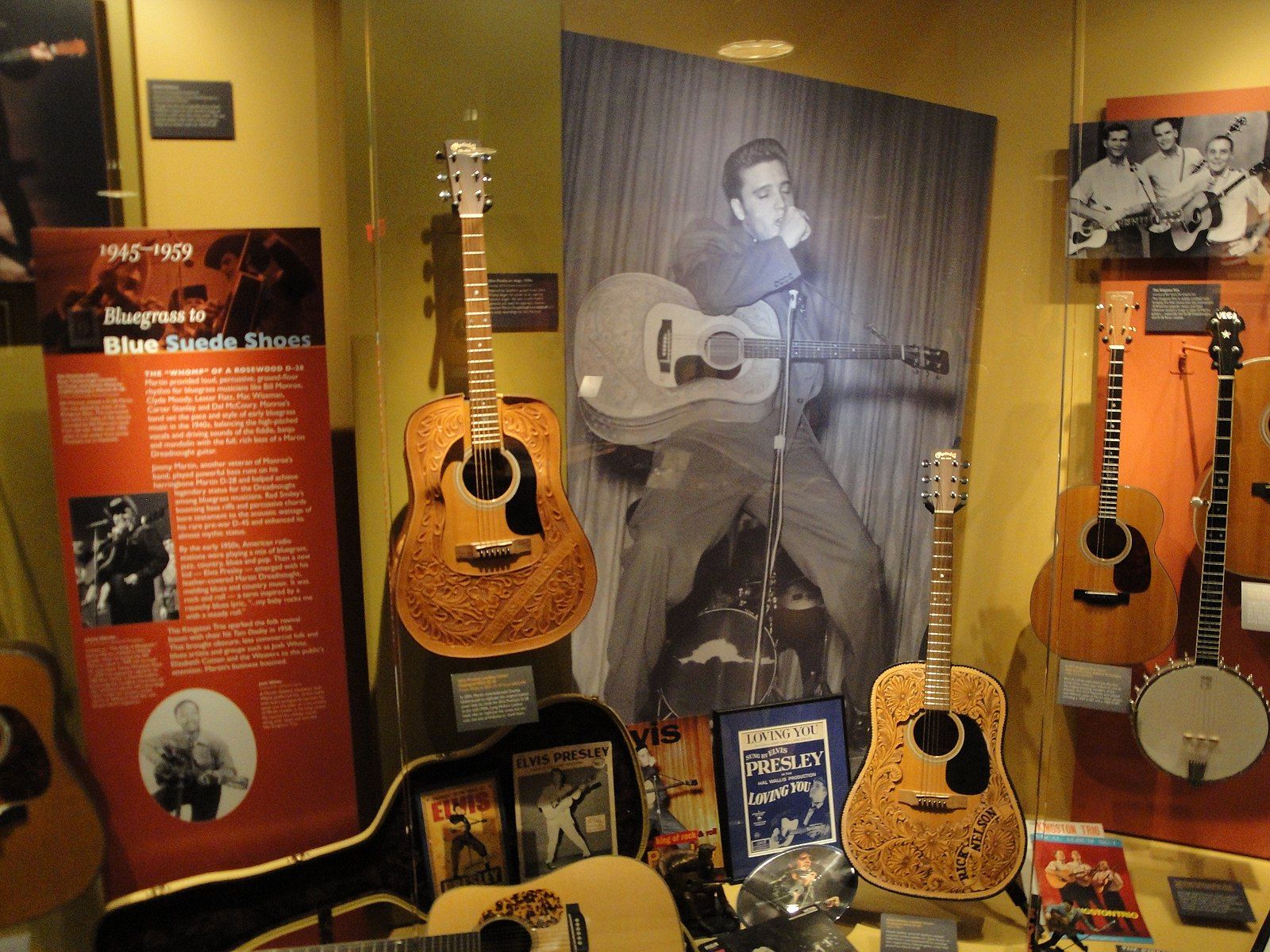
000-18
The 000-18 is one of Martin’s revered smaller-bodied acoustics. Designed to be less hefty than a dreadnought, it manages to maintain the pure tone and resonance that Martin’s larger models are known for.
Like the D-18, the 000-18 features mahogany back and sides with a spruce top. Its smaller body shape is, of course, its greatest delineating factor, making it a great option for players who prefer less of a handful.
In terms of sound, Martin's 000s are a little softer and more balanced tonally. They may not be as loud as a full bodied acoustic, but that makes them perfect for fingerpicking and any player looking for subtlety and nuance.
Gibson
Unlike Martin, Gibson can lay claim to being a “double-threat,” perhaps even more well known for its electric offerings like the Les Paul. But, while they don’t go back quite as far as Martin, Gibson has been producing incredible acoustic guitars for a long time. Since 1894 plenty of acoustic guitarists have agreed with the brand’s slogan: “Only a Gibson is Good Enough.”
Like Martin, Gibson's acoustics can also be found in the hands of many greats: Gillian Welch, the Everly Brothers, Keith Richards, and more have famously used Gibson acoustics to great effect.
Gibson’s acoustics are often desired for their excellent handling of rhythm and accompaniment. Some have described the Gibson acoustic sound as “compressed,” with a scooped midrange that makes them the perfect partner for singer-songwriters.
Popular Models
The same caveat for Martin applies to Gibson - they have produced so many models of acoustics and it is likely that each and everyone is some guitarist’s all-time favorite. With apologies in advance to J-45 lovers, here are some members of the Gibson acoustic lineup that should be highlighted in any discussion of Martin, Gibson, and Taylor:
Hummingbird
While their smaller OO models have a special place in guitar history, when many folks think of Gibson acoustics BIG is what comes to mind. The Hummingbird fits the bill and is the essential Gibson style dreadnought.
Maintaing popularity since its introduction in 1960, the Hummingbird has been incredibly popular ever since. Made with mahogany back and sides with a spruce top, Hummingbirds are known for their full, lush sound that makes them perfect for singer-songwriters performing their own instrumental accompaniment.
In addition to materials and tone, Hummingbirds have a visual style that’s all their own. With an oversized ornate pickguard, block inlays, and finished in various bursts, the Hummingbird makes a visual statement that Martins wouldn’t dare to attempt.
SJ-200
The SJ-200 is a Gibson that is iconic enough to have earned the moniker “King of the Flat-Tops.” It’s not just a standout of the Gibson lineup, it’s unique compared to just about any acoustic guitar.
The SJ-200’s “super-jumbo” body is comprised of flamed maple or rosewood back and sides with a spruce top. The only thing bigger than their silhouette is their fashion sense, putting even the Hummingbird to shame with ornaments including its “Mustache bridge.”
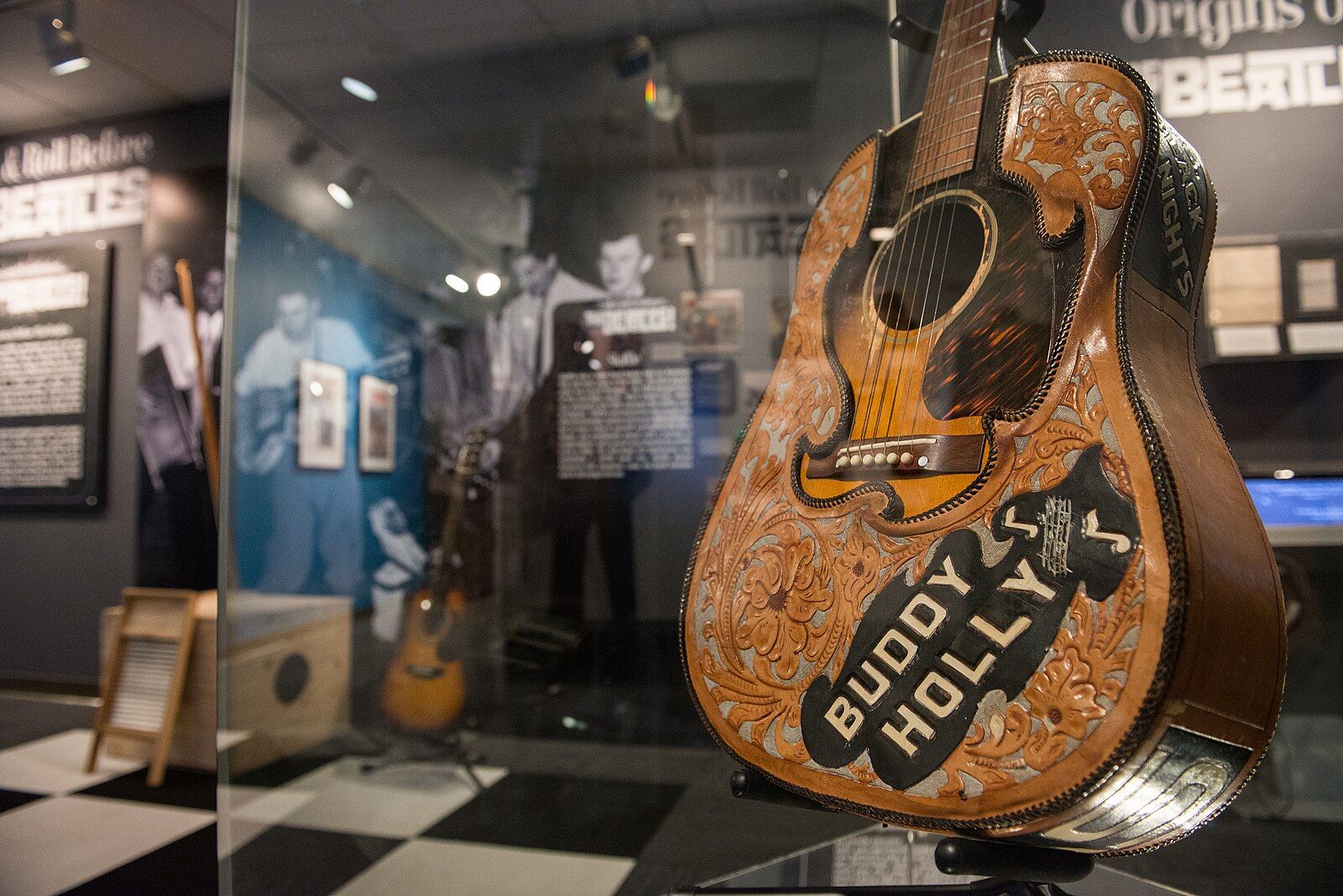
While one might assume SJ-200s are boomy and bassy due to their physical largesse, they’re actually quite balanced and suitable for intimate, nuanced playing. Also like the Hummingbird, the SJ-200 stands out when strummed.
Southern Jumbo
Gibson’s Southern Jumbo is another big ‘un with fewer frills than the Hummingbird or SJ-200. It makes up for fancy appointments with resonance, warmth, and mojo. With a body modeled after the J-45, the “SJ” is mids-forward and extremely versatile, featuring a dynamic range that has earned it a special place amongst flatpickers and fingerpickers alike.
Taylor
In a discussion of Martin, Gibson, and Taylor, the latter may not have the chronological jump on the former, but Taylor has been serving the quintessential “modern” acoustic since 1974. Rather than relying on history, Taylor’s reputation for innovation, high quality, and an emphasis on playability has won over many an acoustic acolyte.
Taylor guitars can be found in the hands of many greats such as Neil Young, Dave Matthews, James Taylor, and more.
Popular Models
Taylor’s most popular models haven’t made it into the history books just yet, but they’ve got some killer guitars that could go toe-to-toe with Martin or Gibson’s best. And without the weight of history on its back, Taylor goes above and beyond to design unique models with modern appointments that improve guitarists’ quality of life. From cutaways and unique soundhole locations to the use of exotic tonewoods, these guitars are set apart both tonally and visually in the context of Martin, Gibson, and Taylor.
814
The 814 is a modern classic in the Taylor lineup. It’s one of their top of the line acoustics, fully adorned and with a huge sound.
Like its popular elders 814s feature spruce tops with rosewood back and sides. What makes them unique is Taylor’s signature "Grand Auditorium" body shape. As its name suggests, the Grand Auditorium can sound loud enough to fill a huge space, but depending on the player it remains rich and vibrant even at lower volume.

818
The 818 is another standout in Taylor’s lineup. Its Grand Orchestra body is even larger than the Grand Auditorium - and most of the other guitars on this list.
Featuring rosewood back and sides with a spruce top, the 818 has a big, warm, and lush sound. They are super powerful, but beloved by fingerstyle for their sparkling top-end and warmth.
612
The 612 is another standout in Taylor’s lineup, one of their best sounding and most unique looking guitars.
Available in a variety of tonewood combos, the standard 612 comes with maple back and sides and a spruce top. It also has a “Grand Concert” body shape, a smaller figure akin to the aforementioned Martin 000. Tonally, the 612 has more of a midrange focus with clear highs and warm lows. Because of their body shape, they are perfect for fingerpicking and recording.
And the Winner Is…
Which acoustic brand comes out on top in a competition between Martin, Taylor, and Gibson? .....The one that works best for you!
You may have seen that copout coming, but it's absolutely true that there is something singularly personal about a guitarists’ choice of acoustic. The beautiful thing is that with Martin, Gibson, and Taylor around - not to mention the hundreds of other quality acoustic manufacturers (Guild, Yamaha, Eastman, and on and on and on) - there’s a guitar out there for everybody.
At Stringjoy we take immense pride in producing strings that bring out the true voice of any acoustic and elevate its sound and playability. So get out there, get your hands on some guitars, and get back to us about which brand rules them all.
Stringjoy's Top Acoustic Offerings
Here are a handful of some of our most popular acoustic sets

Stringjoy 12-54 Light Gauge Naturals - Phosphor Bronze Acoustic Guitar Strings

Stringjoy 11-52 Super Light Gauge Foxwoods - Coated Phosphor Bronze Acoustic Guitar Strings
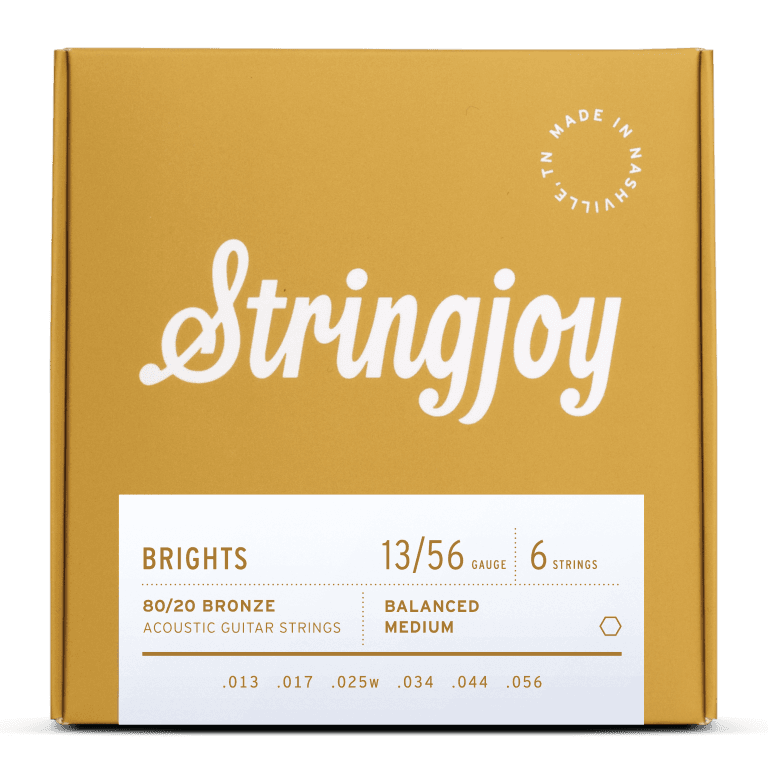
Stringjoy 13-56 Medium Gauge Brights - 80/20 Bronze Acoustic Guitar Strings
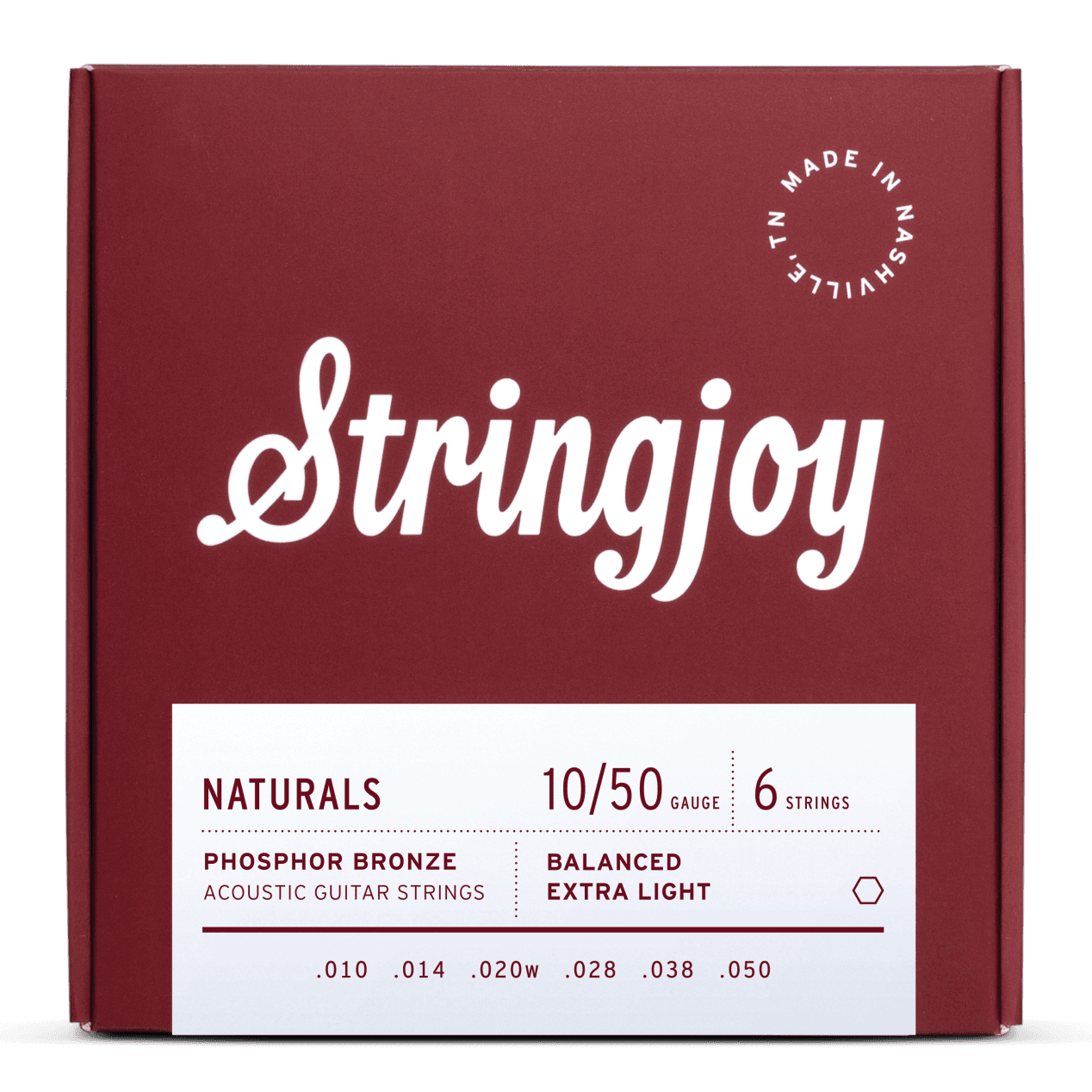
Stringjoy 10-50 Extra Light Gauge Naturals - Phosphor Bronze Acoustic Guitar Strings
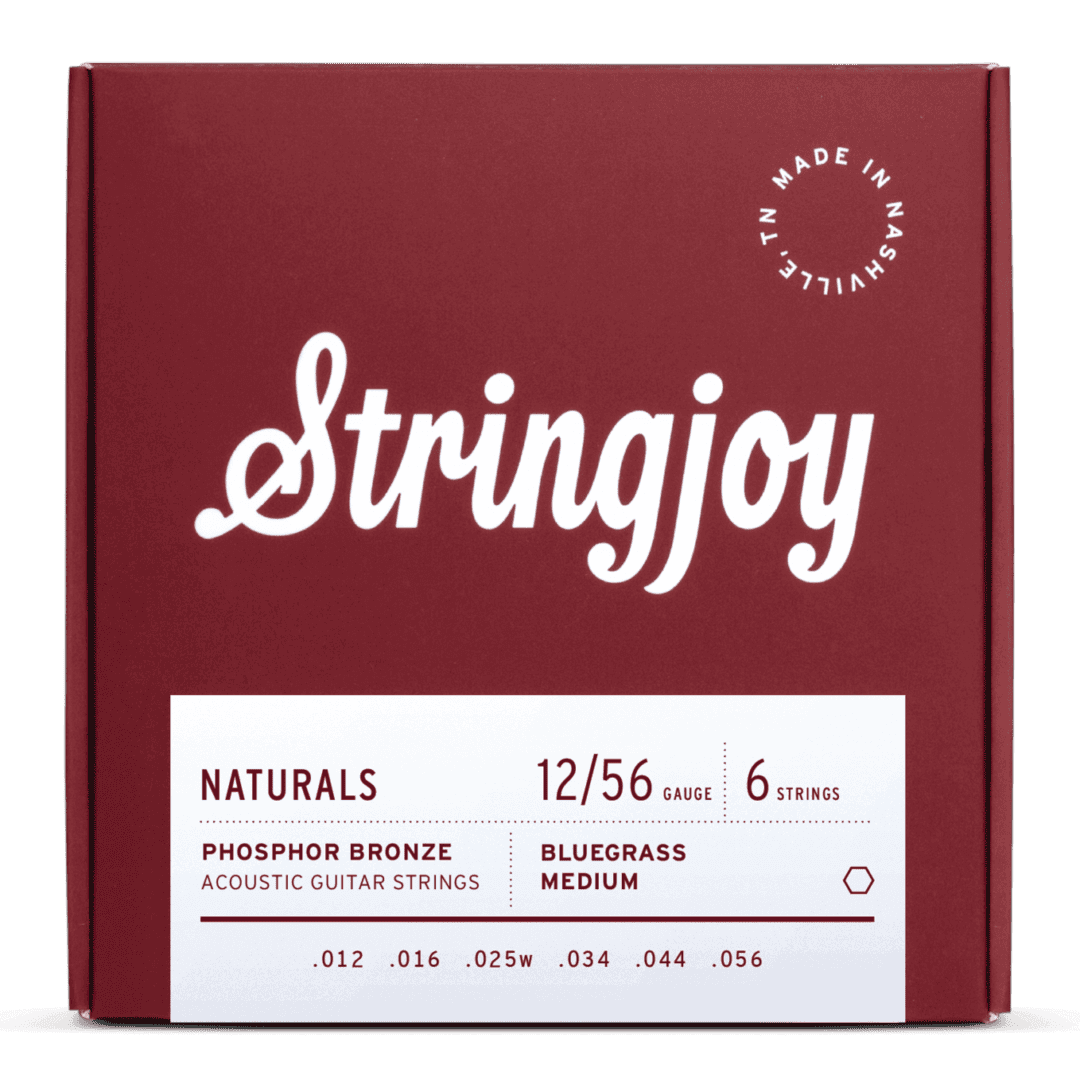
Stringjoy 12-56 Bluegrass Medium Gauge Naturals - Phosphor Bronze Acoustic Guitar Strings
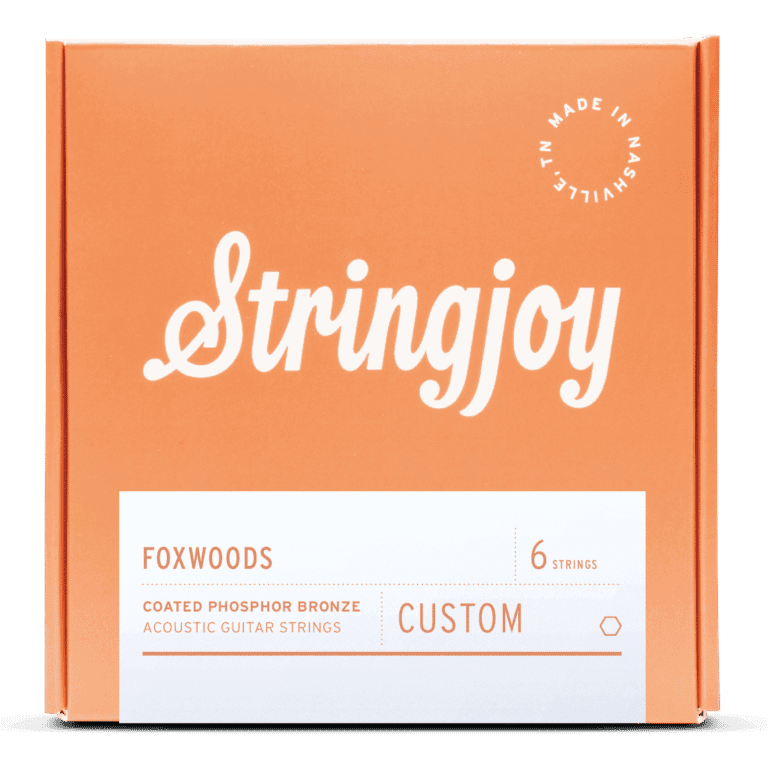
Stringjoy Custom 6 String Foxwoods - Coated Phosphor Bronze Acoustic Guitar Strings
Other Posts you may like

Guitar Strings Order: How the Guitar is Tuned and Why

Two Handed Tapping: Our Top 8 Tappers of All Time

Which Guitar Strings Wear Your Fret Wire Down More?

What is Nashville Tuning? Its History, Best Guitar Strings & Uses

Guitar Scale Length Explained: String Tension & Playability

What Guitar Strings I Used To Play...
0 Responses
Leave a Reply
Your email address will not be published. Required fields are marked *

